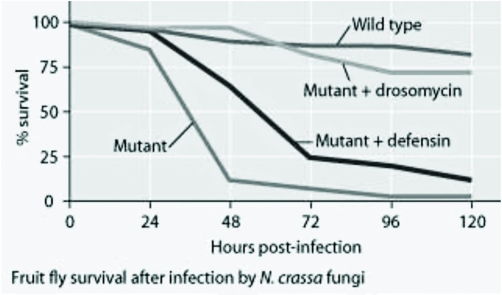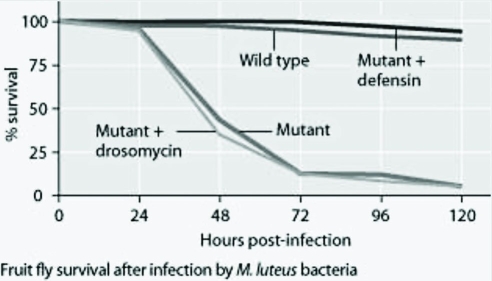Use the graphs to answer the following question.
Mutant fruit flies that do not make antimicrobial peptides were tested for survival after infection with Neurospora crassa fungi or with Micrococcus luteus bacteria. The mutant flies were also transfected with the genes for antimicrobial peptides (drosomycin or defensin) and tested for survival. 

Which of the following hypotheses is best supported using the data?
Definitions:
Q13: Suppose a particular neurotransmitter causes an IPSP
Q16: When a person drinks alcohol, the rate
Q20: Which of the following characterizes parthenogenesis?<br>A) An
Q23: Use the table to answer the following
Q25: Listed below are four types of animal
Q31: Population ecologists follow the fate of same-age
Q31: Use the following figure to answer the
Q39: Which of the following will likely occur
Q59: Which of the following is most likely
Q70: The molecular formula for glucose is C6H12O<sub>6</sub>.